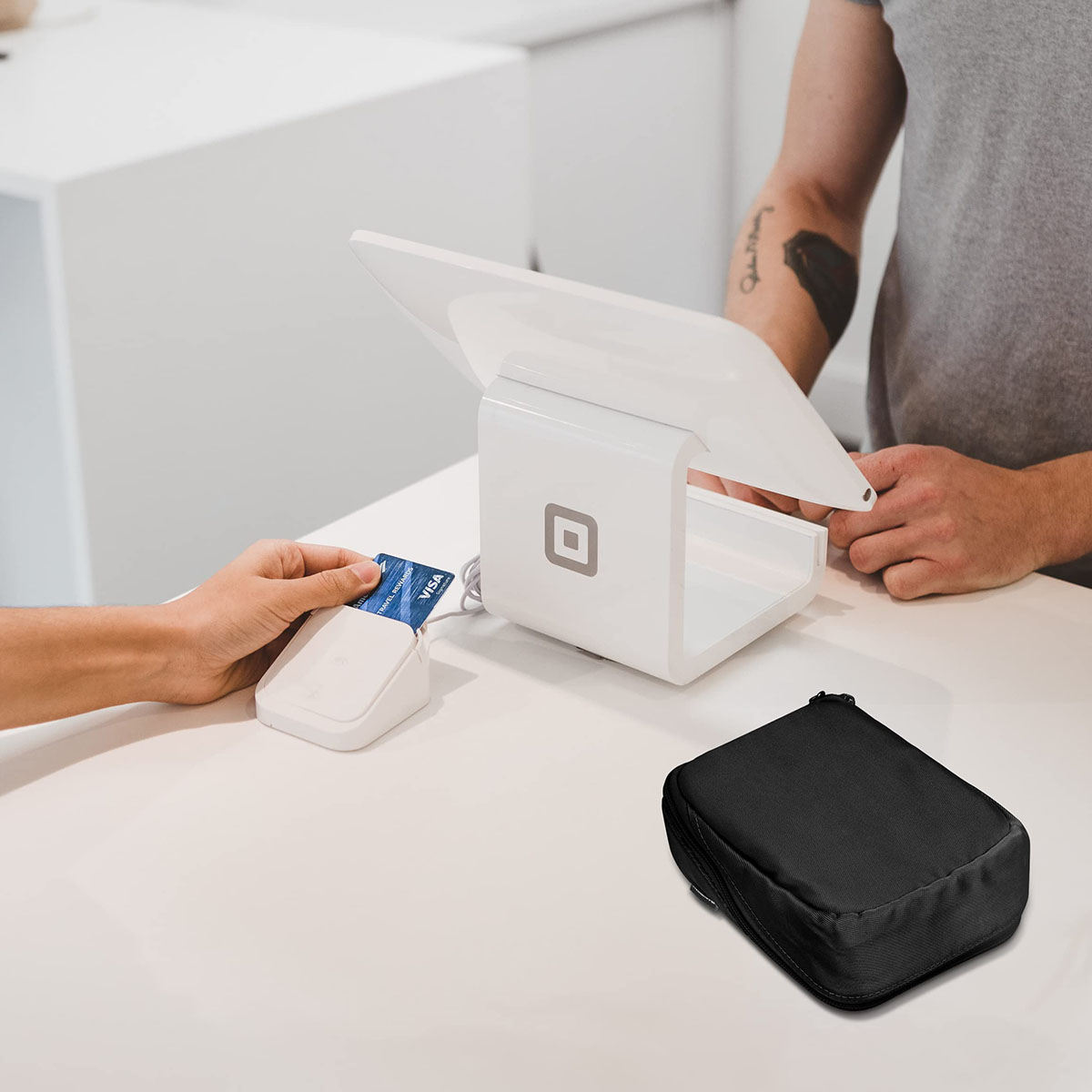

Finance
How Does Black Box Insurance Work?
Published: November 22, 2023
Find out how black box insurance works and how it can save you money on your car insurance premiums. Learn more about the benefits and limitations of this finance-based policy.
(Many of the links in this article redirect to a specific reviewed product. Your purchase of these products through affiliate links helps to generate commission for LiveWell, at no extra cost. Learn more)
Table of Contents
- Introduction
- What is black box insurance?
- How does black box insurance work?
- Installation and setup of black box devices
- Monitoring driving behavior
- Premium calculation based on driving data
- Benefits of black box insurance
- Potential drawbacks of black box insurance
- Choosing the right black box insurance policy
- Conclusion
Introduction
When it comes to auto insurance, there is an increasing trend towards personalized coverage and pricing based on an individual’s driving behavior. This shift has led to the rise of black box insurance, also known as telematics insurance. Black box insurance involves the use of a small device, commonly referred to as a black box or telematics device, which is installed in a vehicle to collect data on how the driver operates the vehicle.
Unlike traditional insurance policies that use general statistics to determine premiums, black box insurance takes into account the specific driving habits of the policyholder. This enables insurance providers to offer more accurate and personalized coverage based on an individual’s actual driving performance.
Black box insurance is gaining popularity for its potential to benefit both policyholders and insurance companies. For drivers, it provides an opportunity to demonstrate safe driving habits and potentially lower their insurance premiums. From an insurance company’s perspective, black box insurance allows for a more precise assessment of risk and the ability to reward safe drivers while appropriately pricing policies for those who pose a higher risk.
In this article, we will explore how black box insurance works and its potential advantages and disadvantages. We will also discuss considerations to keep in mind when choosing a black box insurance policy.
What is black box insurance?
Black box insurance, also known as telematics insurance, is a type of auto insurance that relies on the use of a small device installed in a vehicle to collect data on driving habits. This device, often referred to as a black box or telematics device, records various aspects of the driver’s behavior, such as speed, acceleration, braking, and cornering.
The collected data is then transmitted to the insurance company, where it is analyzed to assess the driver’s risk level. Unlike traditional insurance policies that rely on general statistical data, black box insurance offers a more personalized approach. It takes into account not only factors such as age, location, and vehicle type but also the individual’s actual driving performance.
Telematics technology has become increasingly sophisticated, allowing for the collection of more detailed information. In addition to basic driving behavior, some black box devices can track the time of day a vehicle is driven, the routes taken, and even provide feedback on driving style and safety. This data helps insurers gain a comprehensive understanding of a driver’s habits and adjust premiums accordingly.
Black box insurance is particularly attractive for young or newly licensed drivers who typically face higher insurance premiums due to their limited driving experience. By demonstrating responsible driving behavior through the black box data, these drivers have the potential to access more affordable coverage.
It’s important to note that black box insurance is not limited to private cars. It can also be used for other types of vehicles, such as commercial vehicles or fleets. In these cases, the data collected by the black box can help businesses monitor and improve the driving behavior of their employees, leading to safer operations and potentially lower insurance costs.
Overall, black box insurance offers a more personalized and data-driven approach to auto insurance, allowing both individuals and businesses to benefit from accurate risk assessment and potentially lower premiums.
How does black box insurance work?
Black box insurance operates by utilizing a telematics device installed in a vehicle to monitor and collect data on the driver’s behavior behind the wheel. Here is a breakdown of the key steps involved in how black box insurance works:
- Installation and setup of black box devices: Once the policyholder signs up for black box insurance, a specialized device is installed in their vehicle. This device is usually small and discreet, typically mounted under the dashboard or on the windscreen. The installation is generally carried out by a certified technician or can be done by the policyholder themselves.
- Monitoring driving behavior: Once the device is installed, it begins collecting data on various driving parameters, such as speed, acceleration, braking, and cornering. Some advanced black box devices may also collect additional data, such as time of day, distance traveled, and the routes taken.
- Premium calculation based on driving data: The collected data is transmitted to the insurance company’s servers, where it is analyzed using sophisticated algorithms. The insurer assesses the driver’s risk profile by considering factors such as speed violations, harsh braking, and time of day driving habits. This analysis helps to determine the policyholder’s premium.
- Communication and feedback: Many black box insurance policies provide the policyholder with access to an online portal or a mobile app, where they can view and monitor their driving statistics in real-time. Some insurers also offer feedback and coaching to help drivers improve their habits and potentially access lower premiums.
- Adjustments to premiums: Black box insurance policies often include a review period, typically lasting a few months. During this period, the insurer evaluates the policyholder’s driving behavior based on the collected data. If the driver demonstrates safe and responsible habits, they may qualify for a discount or lower premium at the next renewal.
It’s important to note that black box insurance does not penalize drivers for occasional mistakes or isolated events. Instead, it focuses on overall driving behavior patterns to assess risk and determine premiums. The aim is to reward safe and conscientious drivers with reduced rates while encouraging others to adopt safer habits through data analysis and feedback.
By providing a more accurate assessment of risk based on individual driving behavior, black box insurance helps to promote safer driving habits and potentially lower insurance costs for responsible drivers.
Installation and setup of black box devices
The installation and setup of black box devices are crucial steps in implementing black box insurance. Here’s what you need to know:
1. Professional installation: Black box devices are typically installed by certified technicians who have the knowledge and experience to ensure proper installation. They will carefully position the device in a location that does not obstruct the driver’s view and is less likely to be tampered with.
2. Self-installation options: Some insurance companies offer the option for policyholders to install the device themselves. In such cases, detailed instructions and guidance are provided. It’s important to follow the instructions carefully to ensure accurate data collection and the device’s proper functioning.
3. Device compatibility: Before choosing a black box insurance policy, ensure that the device is compatible with your vehicle. Typically, black box devices are compatible with the majority of modern vehicles, including both petrol and diesel-engine vehicles.
4. Device functionality: Black box devices are designed to collect various sets of data, depending on the insurer’s requirements. Common data collected includes speed, acceleration, braking, and cornering. Some devices may also track additional information such as location, time of day, and distance traveled.
5. Data transmission: The collected data is transmitted securely to the insurance company’s servers. This transmission can happen in real-time or at regular intervals, depending on the specific device’s capabilities and the insurer’s preferences.
6. Data protection: Insurers prioritize data privacy and protection. The collected data is treated with utmost confidentiality and is used solely for assessing risk and determining premiums. It is important to review the insurer’s data handling policies and understand how they safeguard your information.
7. Device maintenance: Black box devices are generally low maintenance. However, it is essential to keep the device in good working order, free from physical damage or interference. Regular vehicle maintenance should also be conducted to ensure accurate data collection.
When considering black box insurance, it is recommended to inquire about the installation process and any associated costs. It’s also wise to review the insurance provider’s customer support channels to easily address any installation or setup-related questions or issues that may arise.
Overall, black box devices are designed to be user-friendly and seamlessly integrate into your vehicle. With proper installation and setup, they can accurately collect driving data and pave the way for personalized insurance coverage based on your actual driving behavior.
Monitoring driving behavior
One of the core functionalities of black box insurance is the monitoring of driving behavior. Black box devices collect data on various aspects of how a driver operates their vehicle. Here’s what you need to know about the monitoring process:
1. Data collection: Black box devices continuously collect data on driving parameters such as speed, acceleration, braking, and cornering. Some devices may also collect additional information such as time of day, distance traveled, and the routes taken.
2. Real-time tracking: Many black box devices have the ability to track driving behavior in real-time. This means that the data is transmitted to the insurance company’s servers as it happens, allowing for immediate analysis and assessment of risk.
3. Driving habit analysis: The collected data is analyzed using sophisticated algorithms by the insurance company. This analysis helps determine a driver’s risk profile based on their driving habits. Factors such as excessive speed, harsh braking, and erratic cornering can impact the assessment of risk.
4. Feedback and coaching: Some black box insurance policies provide feedback and coaching to policyholders. This feedback is often available through an online portal or a mobile app. It helps drivers understand how their driving behavior is being assessed and offers tips and suggestions for improvement.
5. Safety considerations: Black box devices are designed to prioritize safety and encourage responsible driving. They do not record or transmit data related to phone use, conversations, or other distractions. Instead, they focus on critical driving parameters and habits that significantly impact road safety.
6. Positive driving incentives: Black box insurance offers the potential for lower premiums or discounts based on safe driving habits. By consistently demonstrating responsible driving behavior, policyholders can qualify for reduced rates at the time of policy renewal. This serves as a reward for safer driving and encourages long-term positive habits.
7. Privacy and data protection: It is important to note that black box insurance policies prioritize data privacy and protection. The collected data is treated with utmost confidentiality and used solely for assessing risk and determining premiums. Insurers adhere to stringent data handling policies to safeguard policyholders’ information.
Monitoring driving behavior through black box devices promotes greater awareness and understanding of one’s own driving habits. By fostering responsible driving practices and offering incentives for safe behavior, black box insurance aims to improve road safety and create a fairer insurance system based on individual driving performance.
Premium calculation based on driving data
Black box insurance takes a unique approach to premium calculation by using driving data collected through the black box device. Here’s how premium calculations are typically conducted:
1. Data analysis: The driving data collected by the black box device is transmitted to the insurance company, where it undergoes comprehensive analysis. Using sophisticated algorithms, the insurer assesses the driver’s risk level based on various factors such as speed, acceleration, braking, and cornering.
2. Individualized assessment: Unlike traditional insurance policies that rely on general statistical data, black box insurance assesses risk on a more individualized basis. Each driver’s premium is calculated based on their specific driving behavior and patterns revealed by the collected data.
3. Risk assessment: The analysis of driving data helps the insurer determine the level of risk associated with the policyholder. Safe and responsible driving habits, such as maintaining a steady speed and avoiding harsh braking, are typically rewarded with lower premiums. Conversely, risky behavior, such as excessive speeding or aggressive maneuvering, may result in higher premiums.
4. Personalized premium adjustment: Black box insurance allows for ongoing premium adjustment. Policyholders have the opportunity to demonstrate improvements in their driving behavior over time, leading to potential premium reductions. Safe driving habits can result in discounted rates at the time of policy renewal.
5. Fairness and transparency: Premium calculation based on driving data promotes fairness and transparency in the insurance industry. It ensures that premiums are determined by individual behavior rather than relying on general assumptions. Safe drivers are rewarded for their responsible habits, while those who engage in risky behavior may face higher premiums, reflecting their increased likelihood of being involved in accidents.
6. Financial incentives: The potential for lower premiums serves as a financial incentive for policyholders to adopt and maintain safe driving habits. It encourages drivers to be more conscious of their behavior behind the wheel, ultimately contributing to improved road safety for everyone.
7. Continuous improvement: Black box insurance allows individuals to track and monitor their driving habits through the provided feedback and data analysis. Policyholders can use this information to identify areas for improvement and work towards becoming safer drivers. Over time, this can lead to reduced premiums and a positive impact on overall driving behavior.
By utilizing driving data for premium calculation, black box insurance aims to create a fairer and more personalized insurance system. It incentivizes safe driving habits, encourages continuous improvement, and ultimately rewards responsible drivers with lower premiums.
Benefits of black box insurance
Black box insurance offers several benefits for both policyholders and insurance companies. Here are some of the key advantages:
1. Personalized pricing: Black box insurance takes into account an individual’s actual driving behavior when calculating premiums. This means that policyholders who demonstrate safe and responsible driving habits can potentially enjoy lower insurance premiums, reflecting their lower perceived risk.
2. Incentives for safer driving: Black box insurance provides policyholders with incentives to maintain safe driving habits. The potential for lower premiums serves as a motivator for individuals to drive responsibly, obey speed limits, avoid sudden braking, and adopt overall safer driving practices.
3. Improved road safety: By encouraging responsible driving, black box insurance contributes to improved road safety. Policyholders become more aware of their driving behavior and are incentivized to reduce risky actions, leading to a decrease in accidents and safer roads for everyone.
4. Accurate risk assessment: Black box devices collect extensive data on driving behavior, allowing insurance companies to assess risk more accurately. This leads to fairer premium calculations based on individual driving performance rather than general statistical data.
5. Better policy customization: Black box insurance enables insurers to offer more tailored policies to policyholders. Depending on the driving data collected, insurers can provide specific suggestions and feedback to help individuals improve their driving habits, leading to a more personalized and effective insurance coverage.
6. Opportunities for young drivers: Black box insurance policies are particularly beneficial for young or inexperienced drivers who typically face higher insurance premiums. By demonstrating responsible driving behavior through the black box data, these drivers have the potential to access more affordable coverage.
7. Theft recovery and monitoring: Some black box devices have additional features such as GPS tracking, which can aid in theft recovery. In the event of a stolen vehicle, the device can help authorities locate and recover the vehicle more efficiently. Moreover, monitoring locations and driving patterns can provide additional security and peace of mind for vehicle owners.
8. Data-driven feedback: Black box insurance policies often come with feedback and coaching features that provide policyholders with insight into their driving habits and tips for improvement. This feedback can help drivers develop safer habits and become more aware of their actions behind the wheel.
9. Potential for additional services: Alongside insurance coverage, some insurers offer additional services such as breakdown cover or rewards programs based on driving behavior. These additional benefits can enhance the overall value provided by black box insurance policies.
Overall, black box insurance offers numerous advantages, including more personalized pricing, increased road safety, and the opportunity for young drivers to access affordable coverage. By leveraging driving data, insurers can provide tailored policies and incentives for responsible driving, leading to significant benefits for both policyholders and insurance companies.
Potential drawbacks of black box insurance
While black box insurance offers several benefits, it is important to consider potential drawbacks before opting for this type of coverage. Here are some of the potential drawbacks of black box insurance:
1. Privacy concerns: Black box insurance requires the collection and transmission of personal driving data. Some individuals may have concerns about the privacy and security of their data. It is essential to review the insurer’s data handling policies and ensure that they prioritize data protection and transparency.
2. Limited driving freedom: Black box insurance policies often come with certain driving restrictions. For example, some policies may limit nighttime driving or impose curfews to mitigate risk. This can potentially restrict the policyholder’s freedom to drive at specific times or locations.
3. Reducing privacy: Some drivers may feel uncomfortable with constant monitoring of their driving behavior. The presence of a black box device can feel intrusive and may give the impression of being constantly under surveillance.
4. Technical issues: Like any electronic device, black box devices can encounter technical problems or malfunctions. This could result in inaccurate data collection or issues with data transmission. It is crucial to choose a reputable insurer and device provider to minimize the risk of technical complications.
5. Misinterpretation of data: While black box devices are designed to accurately collect driving data, there is still a possibility of misinterpretation or incorrect assessment. Factors such as road conditions, traffic congestion, or emergencies may influence driving behavior and could lead to data misrepresentation.
6. Higher premiums for risky driving: Black box insurance policies consider driving behavior when determining premiums. Drivers who engage in risky behaviors, such as excessive speeding or harsh braking, may face higher premiums. This could make the coverage more expensive for individuals who consistently exhibit riskier driving habits.
7. Device installation and maintenance: The installation and maintenance of black box devices may require additional time and effort. If professional installation is necessary, it may incur additional costs. Moreover, occasional device maintenance may be required to ensure accurate data collection and proper functioning.
8. Lack of policy options: While black box insurance is becoming more prevalent, policy options may still be limited compared to traditional insurance. This means that potential policyholders may have fewer choices in terms of coverage, deductibles, and additional features.
It is important to weigh the benefits against the potential drawbacks when considering black box insurance. Understanding and addressing these concerns can help drivers make an informed decision based on their individual preferences and needs.
Choosing the right black box insurance policy
When considering black box insurance, it’s important to choose the right policy that aligns with your needs and preferences. Here are some factors to consider when selecting a black box insurance policy:
1. Coverage options: Evaluate the coverage options offered by different insurance providers. Consider factors such as liability coverage, comprehensive coverage, and additional benefits like roadside assistance or theft recovery. Choose a policy that provides the level of coverage you require.
2. Premium structure: Understand the premium structure of the policy. Some black box insurance policies offer lower starting premiums with the potential for premium reductions based on safe driving behavior. Consider how the premium calculation aligns with your driving habits and whether it offers opportunities for long-term savings.
3. Data handling policies: Review the insurance company’s data handling policies. Ensure that they prioritize data privacy and protection. Understand how your personal driving data will be collected, stored, and used. It’s important to feel confident in how your information will be handled.
4. Transparency and feedback: Look for a policy that provides transparent feedback on your driving habits. Some insurers offer online portals or mobile apps that allow you to monitor your driving data, receive feedback, and access personalized tips for improvement. This can be valuable in helping you become a safer driver.
5. Customer support: Evaluate the availability and quality of customer support offered by the insurance provider. Check if they have accessible channels for assistance and inquiries regarding the black box device, data analysis, or policy-related concerns.
6. Discounts and rewards: Inquire about any additional discounts or rewards programs the insurer offers. Some black box insurance policies provide incentives for safe driving behavior, such as bonus rewards, cashback, or discounts on other products or services. Assess if these benefits align with your preferences and goals.
7. Flexibility and driving restrictions: Consider any driving restrictions imposed by the policy. Some policies may have limitations on nighttime driving or geographical boundaries. Evaluate how these restrictions align with your typical driving patterns and whether they will impact your personal needs or lifestyle.
8. Insurer reputation: Research the reputation and financial stability of the insurance company you are considering. Look for reviews, ratings, and customer feedback about their black box insurance offerings. A reputable and financially sound insurer can provide peace of mind and reliable coverage.
9. Policy renewal process: Understand the policy renewal process and how the insurer assesses your driving data during this period. Clarify if there are any additional requirements or qualifications for premium reductions or discounts at renewal. This will help you plan for long-term premium savings.
Ultimately, choosing the right black box insurance policy involves careful consideration of coverage options, premium structure, data handling policies, and other factors that align with your individual needs and preferences. By conducting thorough research and understanding the details of different policies, you can make an informed decision and select a black box insurance policy that suits you best.
Conclusion
Black box insurance, also known as telematics insurance, offers a personalized and data-driven approach to auto insurance. It utilizes black box devices to collect driving data, which is then used to assess risk and determine premium rates. While there are potential drawbacks, such as privacy concerns and driving restrictions, the benefits of black box insurance outweigh these considerations for many individuals.
The ability to receive personalized pricing based on one’s actual driving behavior is a significant advantage. Safe and responsible drivers have the opportunity to enjoy lower insurance premiums, while insurance companies can accurately assess risk and reward good driving habits. Black box insurance can also contribute to improved road safety by incentivizing drivers to adopt safer practices and offering feedback and coaching for continuous improvement.
When choosing a black box insurance policy, it is essential to consider factors such as coverage options, premium structure, data handling policies, and customer support. Transparency, flexibility, and the insurer’s reputation are crucial in ensuring a positive experience with black box insurance. Policyholders should also be aware of any driving restrictions and the renewal process to make the most of potential savings.
In conclusion, black box insurance provides an innovative and personalized approach to auto insurance. By integrating driving data into premium calculations, it promotes safer driving habits, fairer pricing, and the opportunity for individuals to save on their insurance costs. As the technology continues to advance and insurers refine their offerings, black box insurance is likely to become an increasingly popular choice for drivers seeking a more customized and economically beneficial insurance experience.














